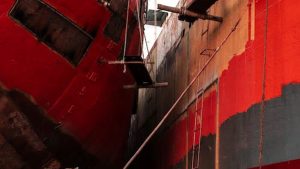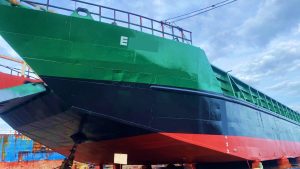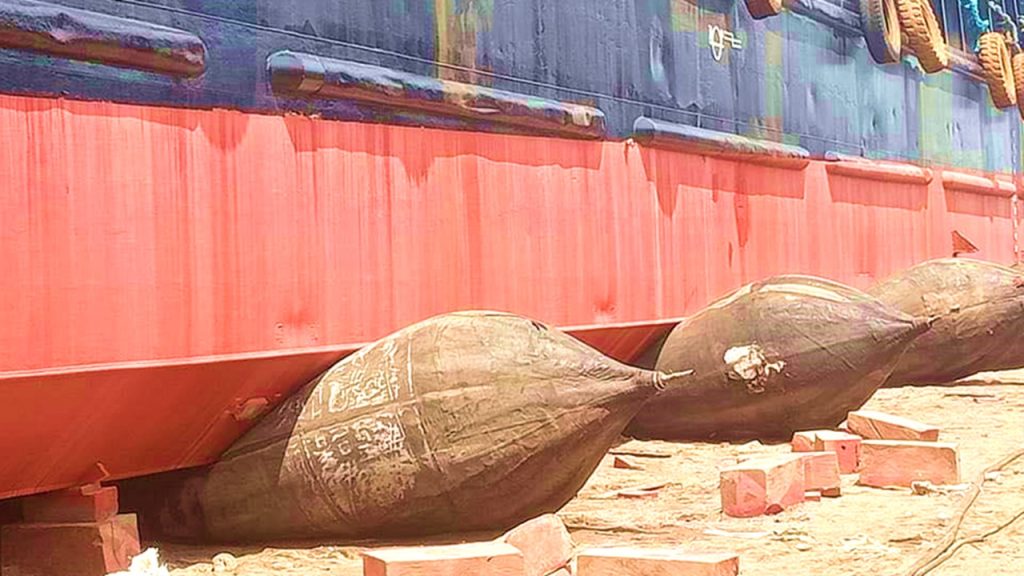In the vast realm of maritime operations, ships are the backbone, acting as lifelines for global trade and transportation. However, these colossal vessels often require meticulous maintenance to ensure their optimal performance and longevity. When it comes to ship maintenance, two terms frequently emerge in the Philippines: ship upgrades and ship repairs. While they may seem synonymous at first glance, a closer look reveals distinct differences between these practices. In this article, we delve into the fascinating world of Philippine maritime engineering to unravel the mysteries behind ship upgrades and ship repairs, shedding light on how they contribute to enhancing vessel capabilities or restoring them to their former glory.
Click here to view our ship upgrade and ship repair services in Tanza, Cavite, Philippines.
Understanding the Importance of Ship Maintenance in the Philippines
Ship maintenance is a crucial aspect of the maritime industry, especially in the Philippines, a country known for its diverse and thriving shipping industry. The importance of ship maintenance cannot be overstated, as it directly impacts the safety, performance, and overall lifespan of a vessel. Regular maintenance ensures that ships remain seaworthy and reliable throughout their operation, minimizing the risk of accidents or breakdowns at sea.
In addition to ensuring safety and reliability, proper ship maintenance also helps optimize operational efficiency and reduce operating costs in the long run. Regular servicing and inspection allow for early detection of potential issues or defects that could lead to more significant problems if left unaddressed. By addressing these issues promptly through routine maintenance processes like cleaning, lubrication, and equipment inspection and repair, businesses can prevent major breakdowns or failures that would result in expensive repairs or even the complete replacement of components.
Furthermore, ship maintenance promotes environmental sustainability by adhering to regulations set by international conventions like MARPOL (International Convention for the Prevention of Pollution from Ships). Maintenance practices help ensure that vessels are equipped with up-to-date pollution prevention equipment, such as oily water separators, to avoid any damage caused by pollutants discharged into marine waters. This commitment to environmental protection not only aligns with global trends but also enhances the reputation and competitiveness of Filipino shippers on an international scale.
Understanding the significance of ship maintenance is essential for everyone involved in the maritime industry in the Philippines.

Definition of Ship Upgrade: Enhancing Performance and Features
A ship upgrade refers to the process of enhancing the performance and features of a vessel in order to meet evolving industry standards, regulations, and owner requirements. It involves making significant modifications to the existing vessel, often resulting in improved efficiency, safety, and overall functionality. Ship upgrades can range from minor alterations, such as installing new navigation equipment or upgrading communication systems, to more extensive modifications, like increasing cargo capacity or installing advanced propulsion systems.
One key aspect of ship upgrades is their impact on fuel consumption and emissions reduction. Many ship owners prioritize eco-friendly enhancements as they strive to comply with environmental regulations and reduce their carbon footprint. This often entails retrofitting vessels with energy-efficient technologies such as optimized hull coatings, waste heat recovery systems, or even switching to alternative fuels like liquefied natural gas (LNG). By investing in ship upgrades that focus on sustainability and efficiency, owners not only benefit financially but also contribute positively towards preserving our environment.
Another crucial aspect of ship upgrades in the Philippines is improving crew welfare and safety measures aboard the vessel. Upgrading accommodation facilities, rest areas, and recreational spaces are some popular ways to enhance crew comfort during long voyages. Additionally, implementing advanced safety features like integrated alarm systems, fire detection systems, or upgrading life-saving appliances plays a vital role in ensuring utmost protection for crew members at sea. The well-being of the crew is paramount for efficient operations onboard a ship; therefore, modernizing these aspects through strategic upgrades helps attract skilled seafarers while minimizing potential risks associated with human error.

Definition of Ship Repair: Restoring Functionality and Safety
Ship repair is a crucial aspect of the maritime industry that focuses on restoring functionality and ensuring the safety of ships. It involves identifying and addressing any defects, damages, or wear and tear that may have occurred during the ship’s operation. Repair work encompasses a wide range of activities, such as fixing propulsion systems, repairing hulls, making electrical or mechanical repairs, and even upgrading navigational equipment.
One key distinction between ship repair and ship upgrade lies in their objectives. While ship repair primarily aims to restore a vessel’s essential functionalities, ship upgrade focuses on improving the overall performance or modernizing specific aspects of the vessel. Upgrades often involve investments in new technologies or equipment that enhance efficiency, reduce emissions, or comply with new regulations.
The process of ship repair typically starts with an inspection to identify areas that require attention. Skilled technicians then undertake repairs based on their specialized knowledge and expertise while adhering to industry standards and guidelines. The ultimate goal is to bring the ship back to optimal working conditions while prioritizing operational safety for crew members and passengers alike.
Ship repair plays a vital role in maintaining the functionality and safety of ships in the Philippine maritime industry. It involves rectifying any damages or defects that may have occurred during operations through various specialized procedures.

Differences in Scope and Purpose of Ship Upgrade and Ship Repair in the Philippines
In the maritime industry, ship upgrades and ship repairs are two terms that are often used interchangeably. However, they have distinct differences in terms of scope and purpose. Ship upgrading refers to the process of enhancing a vessel’s performance or adding new features to modernize it. This could involve installing more efficient engines, improving safety systems, or making structural modifications.
On the other hand, ship repair focuses on fixing any damage or wear and tear that may have occurred during a vessel’s operation. It includes activities such as hull maintenance, engine overhauls, paintwork, and electrical repairs. The primary objective of ship repair is to ensure that the vessel is in optimal working condition and complies with safety standards.
Understanding these distinctions is crucial for both ship owners and operators in the Philippines. It allows them to effectively plan for maintenance work based on their specific needs, whether it involves boosting efficiency through upgrades or addressing immediate issues through repairs. Moreover, having this knowledge can help streamline operations by ensuring that tasks are appropriately assigned to the right experts, whether it be an experienced upgrading team or skilled technicians specializing in repair work.
Having clarity about these differences also sheds light on how these services impact a vessel’s overall lifecycle management. While regular repairs are essential for sustaining a vessel’s operational performance over time, periodic upgrades can provide long-term benefits by extending its lifespan and increasing its value.

Process: How are ship upgrades in the Philippines performed?
When it comes to ship upgrades in the Philippines, the process can be long and intricate. The first step involves conducting a thorough inspection of the vessel to determine what upgrades are needed and what can be salvaged. This is followed by detailed planning, where engineers and technicians design the modifications necessary for the upgrade.
Once the plans are finalized, materials and equipment are sourced from local shipyards or imported if they are not available locally. The actual upgrade work typically takes place in dry docks or floating docks, where the vessel is lifted out of water for maintenance. Skilled welders, electricians, plumbers, and other technicians work tirelessly to implement the planned modifications.
Throughout the process, proper protocols must be followed to ensure all safety standards are met. Inspections are carried out at various stages to verify that the upgrade work meets industry regulations and statutory requirements. Once completed, sea trials may be conducted to test the performance of newly installed systems before returning a ship back into service.
Ship upgrades in the Philippines involve careful planning and execution by teams of skilled professionals who strive to improve vessel performance while complying with strict rules and regulations governing maritime operations.

Process: How are ship repairs in the Philippines performed?
When it comes to ship repairs in the Philippines, the process is highly systematic and detailed. The first step involves identifying the repair requirements by conducting a thorough inspection of the vessel. This includes inspecting the hull, machinery, electrical systems, and any other areas that may require repair or maintenance.
Once the repair requirements are identified, a comprehensive plan is developed, outlining the necessary repairs, estimated costs, and timelines for completion. Experts then review this plan to ensure its feasibility and adherence to safety standards.
The actual repair work begins with mobilizing skilled technicians who specialize in different areas of ship construction and maintenance. These technicians meticulously carry out repairs using advanced tools and equipment. From welding broken metal structures to replacing faulty components or repairing damaged parts, every aspect receives attention with the utmost care.
Ultimately, ship repairs in the Philippines involve a seamless collaboration between skilled professionals who follow stringent quality control protocols throughout every stage of the process. By adhering to international standards and employing specialized expertise, these repairs help maintain seaworthiness while extending a vessel’s service life, contributing to not only maritime safety but also sustainable shipping practices.

Costs and Time Involved in Ship Upgrades and Ship Repairs in the Philippines
When it comes to ship upgrades and ship repairs in the Philippines, both can be significant undertakings that require careful planning and consideration. However, there are distinct differences between these two processes that can impact the costs and time involved.
Ship upgrades typically involve improving or modernizing various aspects of a vessel, such as its equipment, systems, and facilities. These upgrades aim to enhance the performance and efficiency of the ship while meeting regulatory requirements. As a result, they often require extensive engineering work and specialized equipment, which can increase both the costs and the time needed for completion.
On the other hand, ship repairs focus on fixing specific issues or damages to ensure that the vessel is safe and seaworthy. This can include repairing hull damage, addressing mechanical malfunctions, or replacing worn-out parts. Depending on the scale of repair needed, costs and time required may vary significantly. Minor repairs might only take a few days or weeks to complete at relatively lower costs compared to more extensive repairs.
Understanding the difference between ship upgrades and ship repairs is crucial when considering the costs and time involved in these processes in the Philippines. While upgrades focus on overall improvement for performance enhancement purposes (which may be more expensive), repairs target specific issues for maintaining safety standards (which may be less costly but still require adequate attention). Ultimately, a careful assessment of needs, along with consultation with experienced professionals, will help determine which path—upgrade or repair—is most appropriate for optimizing your vessel’s functionality within your budget constraints.

Considerations for Shipowners and Operators for Ship Upgrades and Ship Repairs in the Philippines
When it comes to ship upgrades and ship repairs in the Philippines, shipowners and operators need to consider several factors carefully. First and foremost, they should evaluate the capabilities and expertise of the local shipyards. Not all yards are equipped to handle major upgrades or repairs, so it is important to choose a facility with a good track record for delivering high-quality work.
In addition, shipowners and operators should also consider the cost-effectiveness of conducting these activities in the Philippines. The country has gained recognition as a cost-competitive destination for ship repair and upgrade services due to its lower labor costs compared to other maritime nations. By taking advantage of this cost advantage, shipowners and operators can potentially save significant amounts on their upgrades or repairs.
Furthermore, another crucial aspect that needs consideration is time efficiency. Ship downtime can result in substantial financial losses for owners and operators, so selecting a yard with a reputation for completing projects within specified timelines is essential. This requires thorough research into the yard’s past performance in terms of project completion timescales.
Ultimately, when weighing the options for ship upgrade or repair in the Philippines, wise decision-making should be based on an assessment of yard capabilities, cost-effectiveness, and time efficiency.
Are You Looking for a Ship Upgrade and Ship Repair Company in the Philippines?
If you are in need of a ship upgrade or repair company in the Philippines, look no further than Amaya Dockyard & Marine Services Inc. (ADMSI). With its commitment to quality and cost-effectiveness, ADMSI has established itself as one of the leading companies in the industry.
- Email us: info@amayadockyard.com
- Call our 24-hour hotline: +63 917 633 0479
- Viber: +63 917 633 0479
- WhatsApp: +63 917 633 0479
- Facebook Messenger: Click here
- Click here to inquire
Ship upgrades involve enhancing various aspects of a vessel to improve its performance, efficiency, and safety. ADMSI understands that every ship is unique, and they tailor their upgrades according to each ship’s specific requirements. Whether it’s installing advanced navigation systems or upgrading propulsion machinery, ADMSI ensures that your ship is equipped with state-of-the-art technology and components.
Ship repairs, on the other hand, focus on fixing any damages or defects present in a vessel. As an experienced ship repair company in the Philippines, ADMSI has a team of highly skilled technicians who can handle everything from minor repairs to major overhauls. They use cutting-edge techniques and equipment to carry out efficient repairs while minimizing downtime for your vessel.
With their extensive expertise and commitment to customer satisfaction, ADMSI is your reliable partner for all your ship upgrades and ship repairs in Tanza, Cavite, Philippines. Contact us today to learn more about their services and how they can help improve the performance and longevity of your vessel.

Summing Up: Difference Between Ship Upgrades and Ship Repairs in the Philippines
In conclusion, it is important to understand the key differences between ship upgrades and ship repairs in the Philippines. While both processes involve improving a vessel’s condition, they serve distinct purposes. Ship upgrades are focused on enhancing a ship’s capabilities and features, often through the addition of new equipment or technologies. On the other hand, ship repairs primarily address structural damage or mechanical issues that may affect the ship’s functionality.
One of their major distinctions lies in their scope and duration. Ship upgrades typically involve comprehensive modifications that can take months or even years to complete. This involves extensive planning, purchasing new equipment, and integrating it into existing systems. Ship repairs, on the other hand, tend to be more immediate and targeted in nature as they aim to resolve specific issues that arise during normal operations quickly.
Additionally, another difference lies in their cost implications. Ship upgrades often require substantial financial investments due to their more extensive nature and potential for modernization. In contrast, ship repairs are generally more cost-effective as they focus on addressing specific problems rather than overhauling an entire system.
Understanding these differences is crucial for ship owners and maritime industry stakeholders in order to effectively manage their vessels’ maintenance needs while optimizing resource allocation towards either upgrading or repairing ships accordingly. By recognizing the nuances between these two activities, stakeholders can make well-informed decisions that align with their goals and maximize operational efficiencies within the Philippine shipping industry.



